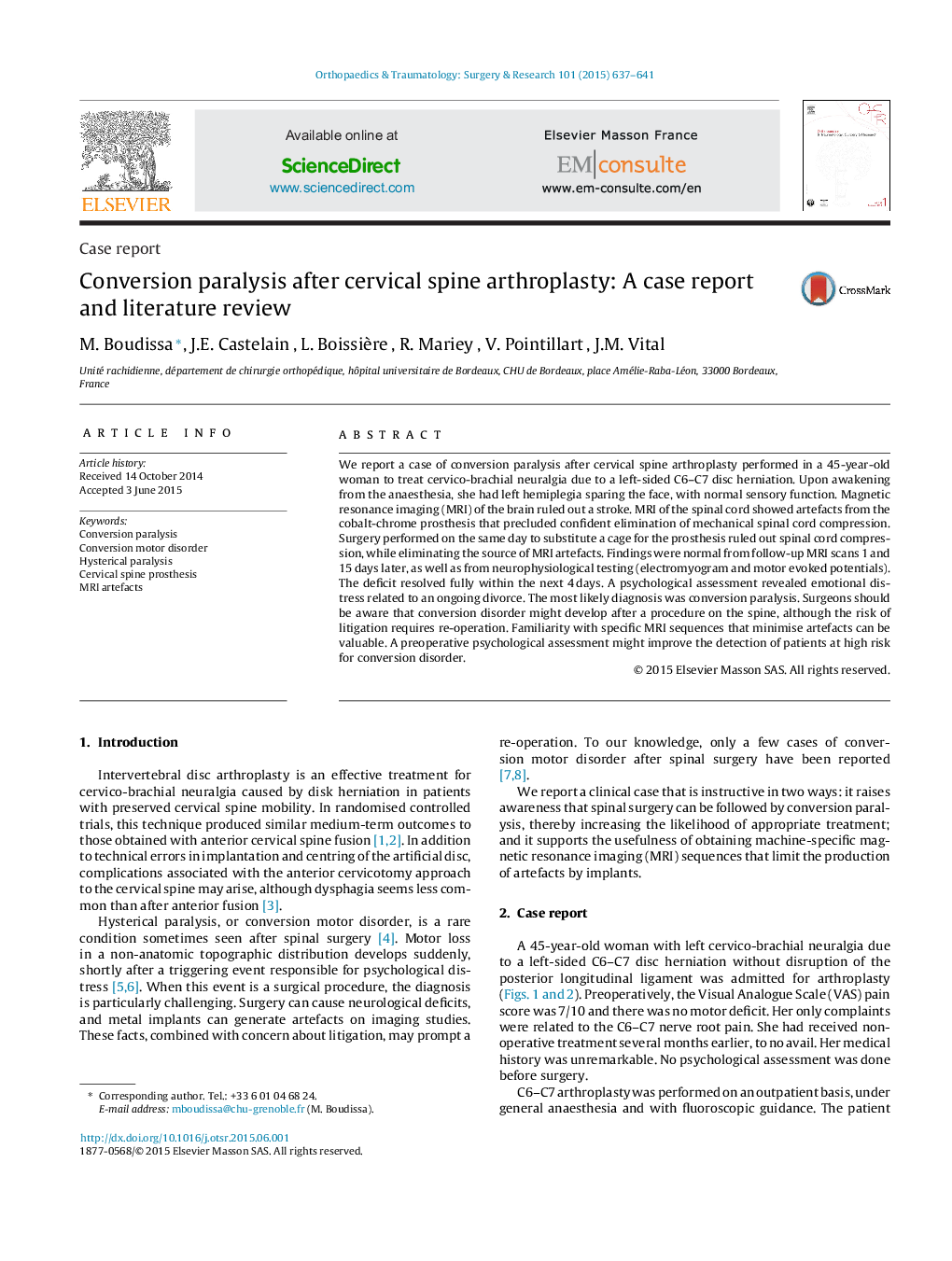| کد مقاله | کد نشریه | سال انتشار | مقاله انگلیسی | نسخه تمام متن |
|---|---|---|---|---|
| 4081060 | 1267577 | 2015 | 5 صفحه PDF | دانلود رایگان |
We report a case of conversion paralysis after cervical spine arthroplasty performed in a 45-year-old woman to treat cervico-brachial neuralgia due to a left-sided C6–C7 disc herniation. Upon awakening from the anaesthesia, she had left hemiplegia sparing the face, with normal sensory function. Magnetic resonance imaging (MRI) of the brain ruled out a stroke. MRI of the spinal cord showed artefacts from the cobalt-chrome prosthesis that precluded confident elimination of mechanical spinal cord compression. Surgery performed on the same day to substitute a cage for the prosthesis ruled out spinal cord compression, while eliminating the source of MRI artefacts. Findings were normal from follow-up MRI scans 1 and 15 days later, as well as from neurophysiological testing (electromyogram and motor evoked potentials). The deficit resolved fully within the next 4 days. A psychological assessment revealed emotional distress related to an ongoing divorce. The most likely diagnosis was conversion paralysis. Surgeons should be aware that conversion disorder might develop after a procedure on the spine, although the risk of litigation requires re-operation. Familiarity with specific MRI sequences that minimise artefacts can be valuable. A preoperative psychological assessment might improve the detection of patients at high risk for conversion disorder.
Journal: Orthopaedics & Traumatology: Surgery & Research - Volume 101, Issue 5, September 2015, Pages 637–641
